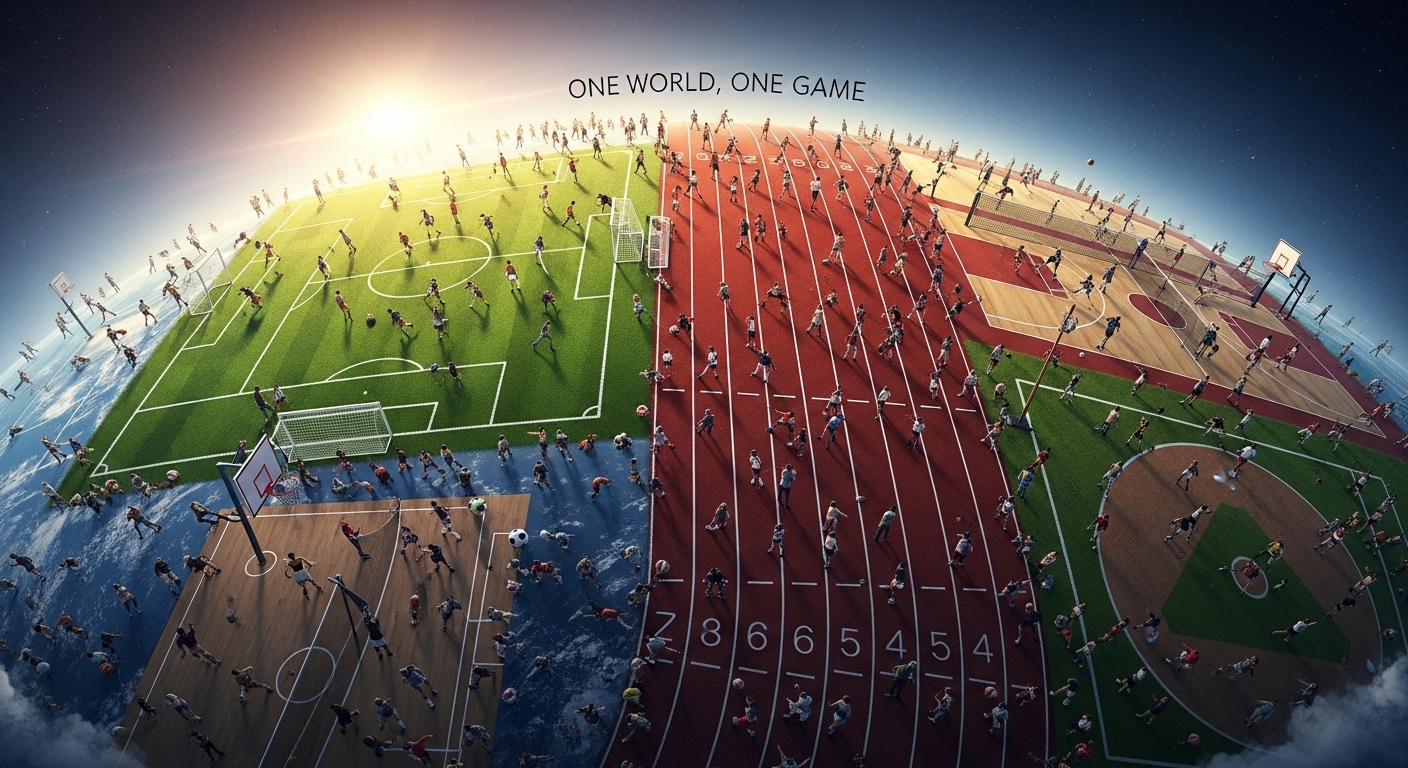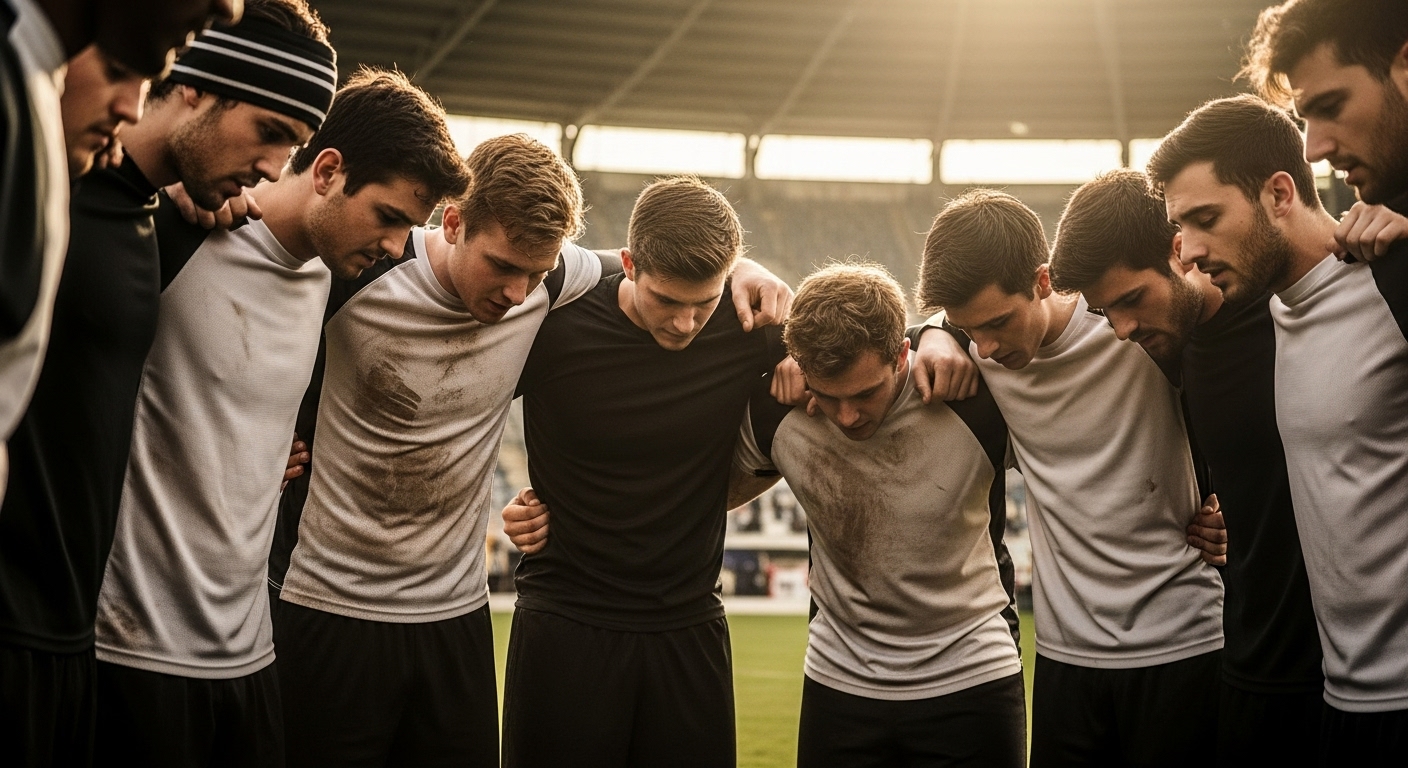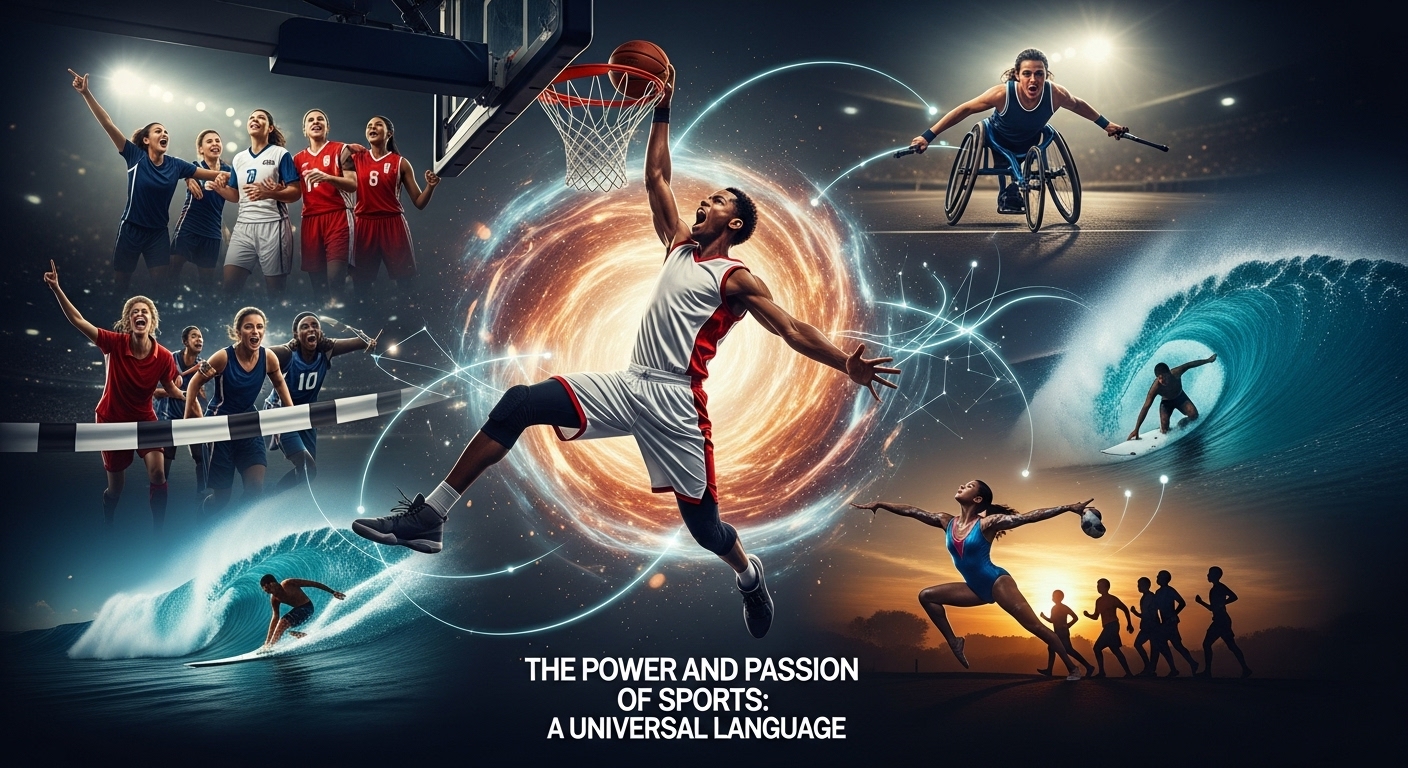Introduction
Sports are more than just games. They are stories of passion, perseverance, and pride. Across cultures and generations, sports have acted as a bridge connecting people from diverse backgrounds. Whether it is football in Brazil, cricket in India, basketball in the United States, or rugby in New Zealand, sports have created shared emotions that transcend boundaries.
In every corner of the world, millions gather in stadiums or huddle around screens to watch their favorite athletes compete. The roar of the crowd, the tension of the final moments, and the tears of victory or defeat all reveal one thing—sports are a universal language. This blog explores the multifaceted world of sports: its history, its impact on society, the life lessons it teaches, and the way it continues to shape humanity’s collective spirit.
The Historical Roots of Sports
Sports have existed for thousands of years. Ancient civilizations used physical competitions as rituals, entertainment, and even military training. The earliest recorded evidence of organized sports can be traced back to ancient Egypt and Greece.
In Egypt, drawings found in tombs depict wrestling, swimming, and archery. The Greeks, however, elevated sports to a cultural phenomenon with the establishment of the Olympic Games around 776 BCE. These early Olympics were held in honor of Zeus, the king of the gods, and included events such as running, boxing, chariot racing, and discus throwing.
The Romans later adopted many of these traditions, creating their own version of sports through gladiatorial contests and chariot races. Although often brutal, these events demonstrated the importance of physical prowess and discipline.
As societies evolved, so did sports. Medieval Europe saw the rise of jousting and archery, while the Renaissance brought new forms of organized play, including fencing and tennis. The industrial revolution in the 19th century provided the foundation for modern sports, as urbanization and improved communication allowed games to be codified, standardized, and spread globally.
The Evolution of Modern Sports
The modern era of sports truly began in the late 19th and early 20th centuries. This period witnessed the formalization of many sports that dominate today’s world stage—football, cricket, basketball, baseball, and athletics, among others.
Football, or soccer as it is called in some countries, became the world’s most popular sport due to its simplicity and accessibility. The formation of football clubs and associations in England, followed by the creation of FIFA in 1904, helped standardize the rules and organize international competitions.
Similarly, cricket grew from its English roots to become a global passion, particularly in South Asia, the Caribbean, and Australia. Basketball, invented by James Naismith in 1891, became a major American export, captivating audiences with its fast-paced energy and athleticism. The National Basketball Association (NBA) would later turn players like Michael Jordan, Kobe Bryant, and LeBron James into global icons.
The modern Olympic Games, revived in 1896 by Pierre de Coubertin, brought sports into the international spotlight. It became a symbol of peace and unity, where nations could compete not on the battlefield but in the arena of athletic skill.
The Global Impact of Sports
The influence of sports extends far beyond physical competition. It shapes cultures, builds communities, and even influences politics and economics. In many countries, sports are a source of national identity.
When a country wins a World Cup, an Olympic gold medal, or a continental championship, the sense of pride among citizens is immense. For instance, South Africa’s 1995 Rugby World Cup victory became a symbol of unity in the post-apartheid era. Likewise, the 1980 “Miracle on Ice,” when the U.S. hockey team defeated the Soviet Union, had a deep emotional impact during the Cold War period.
Sports also drive economies. Major sporting events like the FIFA World Cup, the Olympic Games, and the Super Bowl generate billions of dollars in revenue through tourism, broadcasting rights, sponsorships, and merchandise. Cities and countries invest heavily in infrastructure, hoping to reap both economic and reputational benefits.
At a local level, sports clubs and community teams help strengthen social bonds. They offer young people safe spaces to learn teamwork, discipline, and leadership. In underprivileged areas, sports programs have been used as tools to reduce crime, improve education, and promote gender equality.
The Role of Technology in Modern Sports
The digital age has transformed sports in ways unimaginable a century ago. Technology now plays a crucial role in training, performance analysis, broadcasting, and fan engagement.
Athletes use advanced sensors and wearable devices to track their heart rate, speed, and muscle efficiency. Coaches analyze this data to create personalized training regimens that maximize performance while minimizing injury risk. Video analysis tools allow players to study their techniques and opponents’ strategies in detail.
In stadiums, technology has improved the spectator experience. Giant screens, instant replays, and virtual reality viewing options make fans feel closer to the action. Social media has also revolutionized how fans interact with teams and athletes, providing direct communication channels and global exposure.
Refereeing has become more accurate with tools such as VAR (Video Assistant Referee) in football and Hawk-Eye in tennis and cricket. These innovations ensure fairness and reduce controversies, although they sometimes spark debates about the balance between human judgment and technology.
Sports and Mental Health
Sports are not only about physical strength; they are deeply connected to mental well-being. Regular participation in sports can reduce stress, anxiety, and depression by releasing endorphins, the body’s natural mood elevators.
Athletes often talk about the “zone,” a mental state of intense focus and calm during competition. This psychological aspect of sports is as important as physical conditioning. The mental resilience built through training, defeat, and comeback stories is invaluable.
However, the mental health of professional athletes has gained increased attention in recent years. The pressure to perform, public scrutiny, and the fear of failure can take a toll. Many prominent athletes have spoken openly about their struggles, breaking the stigma and encouraging others to seek help. This shift has led to better mental health support systems within sports organizations and clubs.
For ordinary individuals, playing sports can serve as a form of meditation in motion. The discipline required to train, the camaraderie of teammates, and the joy of improvement all contribute to a balanced mind and body.
Gender Equality in Sports
For much of history, sports were dominated by men. Women were often discouraged or even banned from participating in competitive events. Yet, over the past century, the landscape has changed dramatically.
Trailblazers like Billie Jean King in tennis, Serena Williams, Simone Biles in gymnastics, and Megan Rapinoe in football have challenged stereotypes and inspired millions. The inclusion of women’s events in the Olympics and the growth of professional women’s leagues have been major milestones.
Despite progress, challenges remain. Gender pay gaps, unequal media coverage, and limited sponsorship opportunities persist in many sports. However, awareness and advocacy are driving positive change. The success of women’s teams and athletes continues to prove that talent and determination are not defined by gender.
Sports also play a vital role in empowering young girls. Through sports, they learn confidence, teamwork, and leadership—skills that benefit them both on and off the field.
The Business of Sports
Sports today are a massive global industry. Beyond the players and coaches, there are countless roles in management, marketing, broadcasting, and merchandise production. The business side of sports has evolved into a complex ecosystem involving billions of dollars in revenue.
Sponsorship and advertising form the backbone of this ecosystem. Companies align their brands with teams and athletes to reach audiences worldwide. Iconic endorsements, such as Michael Jordan’s partnership with Nike, have become cultural landmarks in themselves.
Broadcasting rights are another major source of income. Sports networks compete fiercely to secure exclusive coverage of top leagues and tournaments, driving up the value of media contracts.
Merchandise, ticket sales, and digital content also contribute significantly. In the digital age, fans can purchase team jerseys online, subscribe to exclusive streaming services, or engage with virtual sports experiences. The rise of esports—competitive video gaming—has expanded the definition of sports itself, attracting millions of viewers and players globally.
Sports and Education
Sports and education go hand in hand. Schools and universities around the world integrate sports into their curriculums to promote holistic development. Physical education teaches discipline, cooperation, and perseverance.
In countries like the United States, college sports have become a significant part of the educational system. Scholarships allow talented athletes to pursue higher education while competing at elite levels. University rivalries like those between Harvard and Yale or Michigan and Ohio State have become major cultural events.
Beyond competition, sports instill lifelong values. Students learn to balance academics with extracurricular activities, manage time effectively, and develop a healthy lifestyle. These lessons prepare them for challenges beyond the classroom.
The Spirit of Competition and Sportsmanship
At its core, sports are about competition—but also about respect. True sportsmanship involves fairness, humility in victory, and grace in defeat. These values distinguish sports as more than mere contests of strength or skill.
Throughout history, countless moments have exemplified sportsmanship. Athletes who stop to help injured rivals, teams that honor opponents after a tough loss, and gestures of respect across cultural divides remind us that humanity transcends rivalry.
Unfortunately, there are also moments of controversy—doping scandals, match-fixing, and unsportsmanlike behavior—that tarnish the integrity of sports. Yet, such incidents often lead to stronger regulations and renewed emphasis on ethics.
The essence of sportsmanship lies in the idea that every participant, whether a winner or not, contributes to the spirit of the game.
The Role of Sports in National and Global Unity
Sports have the power to heal, inspire, and unite. During times of conflict or crisis, they offer hope and a sense of normalcy. The Olympics, in particular, stand as a symbol of global peace and cooperation.
When athletes from rival nations share the same podium, it reminds the world that unity is possible. Sporting diplomacy has often opened doors where politics failed. Historic moments like the “Ping Pong Diplomacy” between the United States and China in the 1970s demonstrate how sports can bridge ideological divides.
Even within nations, sports bring people together. Local clubs and national teams become sources of collective pride. For a few hours during a match, differences of race, class, or religion fade away as fans cheer for the same goal.
The Future of Sports
The future of sports looks both exciting and challenging. As technology, globalization, and social change continue to reshape society, sports must adapt.
Virtual and augmented reality will redefine how fans experience games. Artificial intelligence and data analytics will enhance performance and strategy. Sustainability will also become a major focus, as sporting events aim to reduce their environmental impact through eco-friendly stadiums and responsible tourism.
Inclusivity will remain a key theme—whether through promoting gender equality, supporting athletes with disabilities, or making sports accessible to all socioeconomic groups. Esports will continue to grow, blurring the line between physical and digital competition.
The human element, however, will always remain at the heart of sports. The emotions, the stories of struggle and triumph, and the unbreakable bond between athletes and fans will ensure that sports remain a timeless part of human culture.
Conclusion
Sports are one of humanity’s greatest creations. They combine art, science, and spirit in a way that no other human endeavor can. From the ancient arenas of Greece to the high-tech stadiums of today, the essence of sports has remained the same—striving for excellence, celebrating effort, and uniting people through shared passion.
Whether we play, watch, or simply admire from afar, sports remind us of what it means to be human. They teach us resilience, teamwork, respect, and the joy of pushing our limits.
In every whistle blown, every goal scored, and every finish line crossed, there lies a story—a story of the human spirit’s boundless potential. Sports are not just games; they are life itself, played on the grandest stage imaginable.



